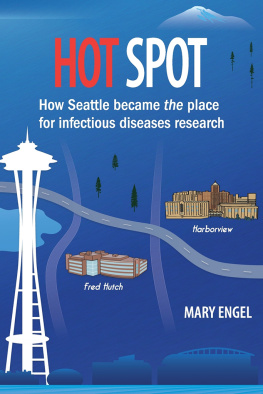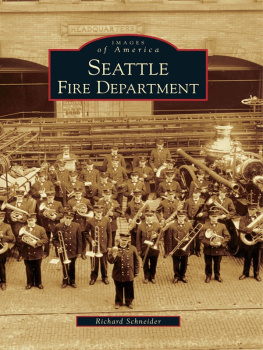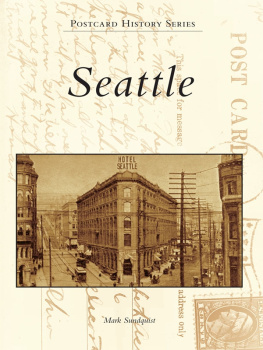
Copyright 2022 by Mary Engel
All rights reserved. No part of this book publication may be reproduced, stored in a retrieval system, or transmitted in any form or by any means electronic, mechanical, photocopy, recording, or any other means, except for brief quotation in reviews, without the prior permission of the author. To contact the author, email: .
Cover design by Patrick Grandaw
Engel, Mary
Hot Spot: How Seattle became the place for infectious diseases research
ISBN 979-8-218-00277-0
ISBN 979-8-218-02748-3(e-book)
Also for sale in ebook format.
1. Medical / Infectious Diseases. 2. Science/ History. 3. Biography & Autobiography/ Medical. 4. Medical/ History
Book design and publishing management by Bryan Tomasovich
at The Publishing World
Distributed by Ingram
Printed in the U.S.A.


Authors Note
W hen Larry Corey approached me about writing a history of the early years of the University of Washington (UW) infectious-diseases program, he explained his motivation for the project this way: I was trained by the most amazing people in the world.
He wanted the history to explore how Seattle came to develop such a large, comprehensive, and influential program, beginning with good leaders begetting good leaders. And most of all, he wanted to capture the early builders stories.
That is what this book attempts to do. It covers roughly the period between the arrival of William M.M. Kirby in 1949 to the death of Walter E. Stamm in 2009, with most of the emphasis on fellows from the 1960s, 1970s, and 1980s. For not being able to include all of the remarkable researchers and physician-researchers from this time period, I apologize and hope that Ive been able to convey a good sampling of experiences. For those who came later, the work now being done will surely merit its own history.
Because I was still working on this book at the time of the COVID-19 pandemic and because it was hard to ignore, I included a postscript on Seattle researchers early contributions to reining in the pandemic.
Profits from the sale of this book will help fund UW infectious diseases fellowships.
Introduction
S eattle is recognized worldwide as a powerhouse in infectious-diseases (ID) research. How it got there is a storied history, starting with Robert G. Petersdorf, the chair of the University of Washington Department of Medicine who laid its foundation. The first story everyone tells is how he once questioned the demand for the very division he helped build.
Even with my great personal loyalties to infectious diseases, I cannot conceive of a need for 309 more infectious-diseases experts unless they spend their time culturing each other, he wrote in 1978, referring to the number of ID fellows nationwide scheduled to take the certifying examination that year.
A giant in both ID and in American medical education, Petersdorf was hardly alone in thinking that by the late 1970s, the revolution wrought by better sanitation, vaccines, and antibiotics had lessened the need for his subspecialty. But even as he published the commentary in the New England Journal of Medicine arguing for more generalists, a mysterious new illness was beginning to appear.
First reported in 1981, HIV/AIDS would infect millions of men and women worldwide. It and other newly emerging infections, along with reemerging diseases fueled by surging antimicrobial resistance, would prove the continuing need for ID experts. So too would the growing population of people uniquely susceptible to infections, whether due to HIV, cancer treatments that prolonged lives but impaired immunity, or organ transplants that required lifelong immune-suppressing drugs.
Fortunately, the division Petersdorf launched and the physician-researchers trained there were ready to meet the challenge. In fact, Seattle ended up being uniquely well positioned to battle the HIV/ AIDS epidemic because of its trailblazing research in three areas.
Sexually transmitted infections (STIs) had not been considered a reputable academic subject of research until an influential UW physician-scientist almost single-handedly made it one, well before HIV hit. Also, before HIV, a UW researcher investigating herpesviruses led clinical trials for the first successful antiviral therapies. And because UW oncologists developed bone marrow transplantation in Seattle, infectious-diseases experts already were learning how to keep patients whose immune systems had been destroyed by treatment from dying of infections.
How did the UWat the time of Petersdorfs arrival in 1960, still an upstart medical school far from the then-centers of infectious-diseases researchcome to be such a leader in the field?
For starters, a trio of stars was already at the UW when or soon after Petersdorf arrived.
William M.M. Kirby came to Seattle in 1949 from Stanford University, recruited by Petersdorfs predecessor to be one of the original members of the Department of Medicine and the first ID specialist in the Pacific Northwest. An expert in tuberculosis and other chest diseases, Kirby was one of the leaders of the antibiotic revolution. He headed the team that invented the Kirby-Bauer antibiotic susceptibility test, which became the standard worldwide for determining which antibiotic to use when treating an infection. It is still in use today.
Kirbys presence helped lure John Sherris, a pioneer in what was then called clinical bacteriology, to the UW from his native England in 1959. Sherris was brought in to run the microbiology laboratory program at the newly opened University of Washington Medical Center. He worked with Kirby and Kirbys fellow, Alfred Bauer, in standardizing the disk diffusion susceptibility test and trained and collaborated with infectious-diseases researchers throughout his long career.
Seymour J. Klebanoff, one of the best white-blood-cell researchers in the world, came to the UW in 1962. He revolutionized sciences understanding of the bodys infection-fighting immune system. When Kirby decided to step away from administrative duties, Klebanoff became head of the newly combined and renamed Division of Allergy and Infectious Diseases from 1976 to 1994. Like Kirby and Sherris, Klebanoff was known for graciousness and dry, often self-effacing, wit.
And then there was Petersdorf himself.
He was a builder, said Donald Kaye, a contemporary of Petersdorfs, who was chief of medicine at the Medical College of Pennsylvania around the time Petersdorf was at UW. He was an unusual person, a force to be reckoned with. Bob Petersdorf built an academic, full-time infectious disease operation in Seattle. The reason he was able to do that was in part because he was Bob Petersdorf.
Petersdorf first came to Seattle to be chief of medicine at Harborview Medical Center, the county-owned, UW-run hospital that was and remains a key clinical teaching site. He had barely arrived when he published a landmark paper on fever of unknown origin with his Yale mentor, Paul Beeson, a legendary physician-scientist who helped shape the field of infectious diseases. Later, Petersdorf became known for his work on endocarditis, begun while on sabbatical with Beeson.















